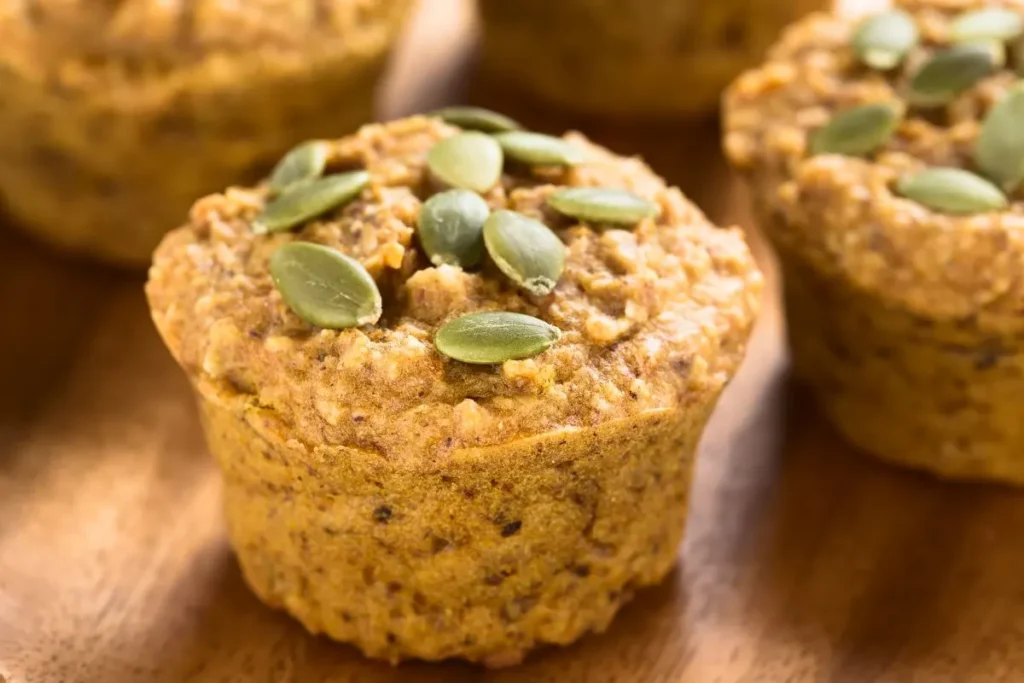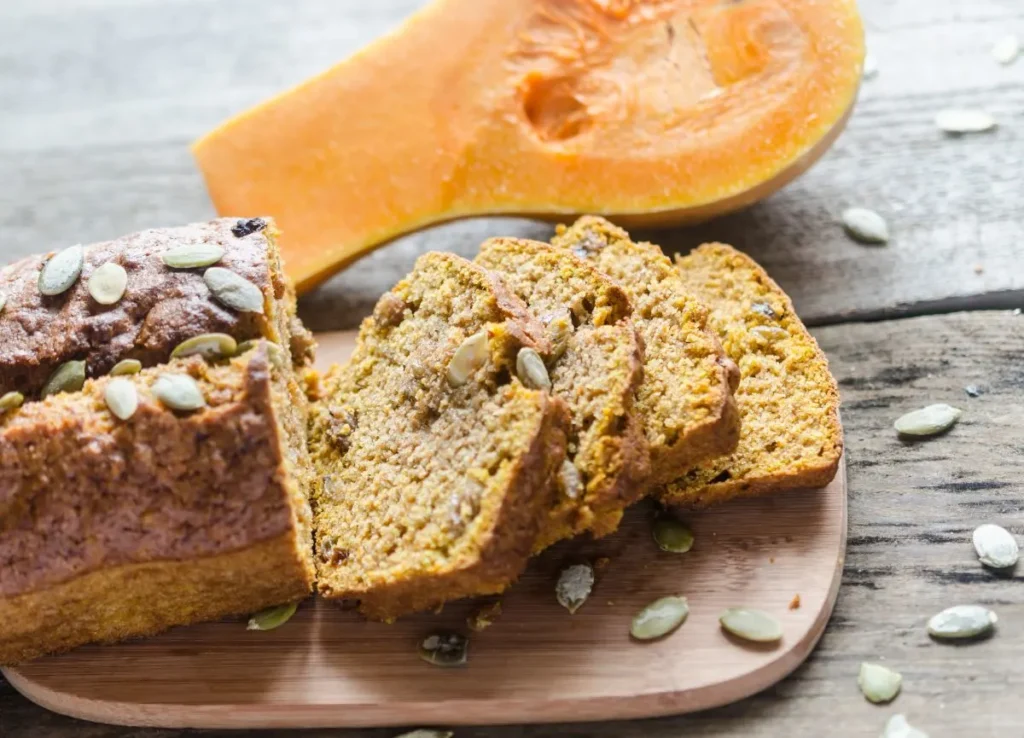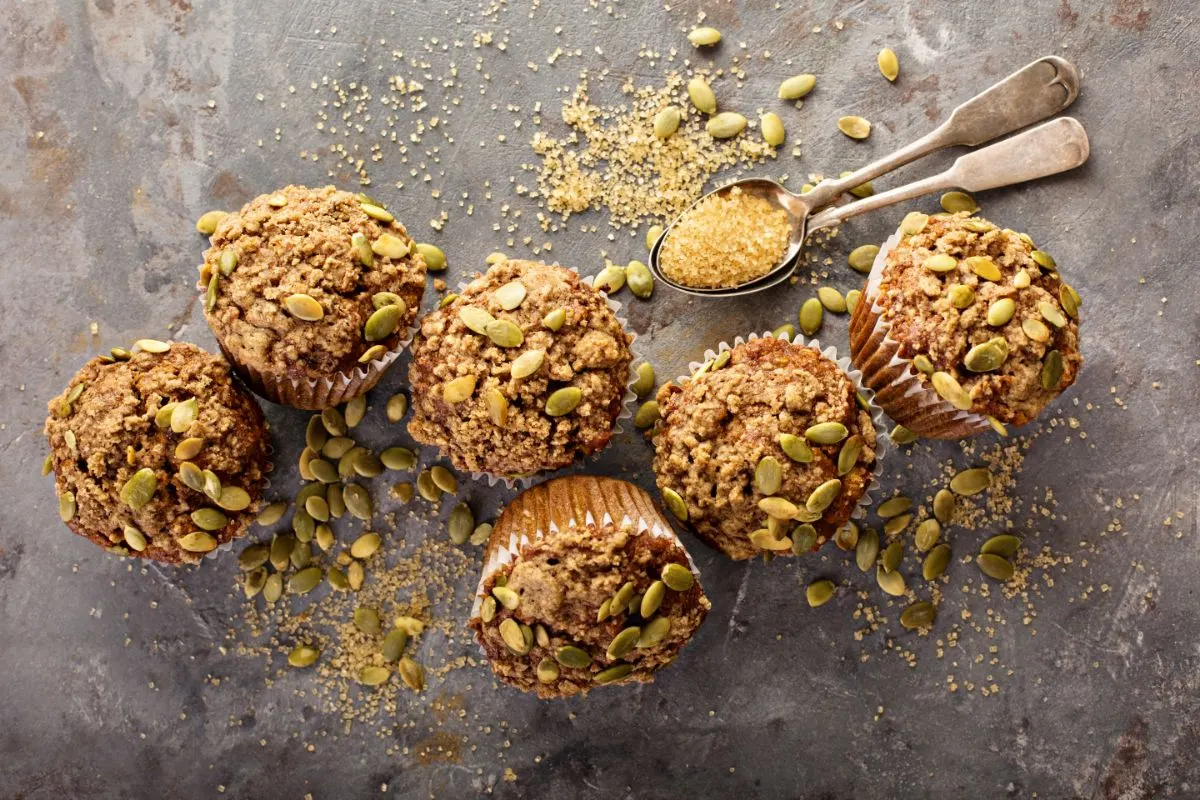Moist and satisfying protein pumpkin muffins that boost nutrition and flavor.
Introduction
When crisp autumn air ushers in cozy seasonal flavors, it often inspires us to experiment with comforting, nutrient-rich recipes. Protein pumpkin muffins have become increasingly popular because they offer a delightful way to enjoy a sweet, nourishing treat without compromising your dietary goals. In fact, they blend wholesome pumpkin puree with quality protein sources and warm spices, creating a portable, nutrient-dense snack that fits perfectly into busy lifestyles.
These muffins stand out not just for their excellent protein content, but also for their unique seasonal flair. Pumpkin adds a subtle, earthy sweetness and moisture that pairs beautifully with spices like cinnamon and nutmeg. Many home bakers appreciate how these muffins deliver a balanced, energizing bite that can easily serve as a satisfying breakfast, a post-workout refuel, or a midday pick-me-up.
In this complete guide, we will explore the health benefits of protein pumpkin muffins and learn how to choose the right ingredients. We will also provide a step-by-step recipe, share valuable baking tips, suggest flavor variations, and troubleshoot common issues. By the end, you will have a thorough understanding of how to create the perfect batch of protein-packed pumpkin muffins to enjoy all year long.
Table of Contents
Why Protein Pumpkin Muffins Are So Appealing
The Power of Protein and Pumpkin
Protein pumpkin muffins intrigue many health-conscious bakers for good reason. They offer more than just a pumpkin-flavored treat; they provide a robust nutritional profile. Pumpkin is a nutrient powerhouse, rich in fiber, vitamin A, and antioxidants. Meanwhile, protein enhances muscle recovery, increases satiety, and helps maintain steady energy levels. Therefore, combining these two key ingredients results in a uniquely balanced snack or meal option.
Ideal for Various Lifestyles
In addition, protein pumpkin muffins fit effortlessly into numerous dietary patterns. They are highly adaptable, allowing you to customize them for gluten-free, dairy-free, or low-sugar diets. For example, you can easily swap the type of protein powder or sweetener to meet specific nutritional needs. Moreover, the versatility of these muffins ensures that whether you are an athlete, a busy professional, a student, or a health enthusiast, you can benefit from these tasty and convenient baked goods.
Seasonal Comfort Meets Year-Round Nutrition
Pumpkin often takes center stage in the fall, filling kitchens with warmth and nostalgia. However, these protein-rich muffins need not be limited to autumn. By keeping a supply of canned pumpkin on hand, you can enjoy this comforting flavor profile all year long. In fact, pairing these muffins with a warm beverage or a refreshing post-workout shake can turn an ordinary moment into something satisfying and memorable.
(For more creative breakfast ideas, you can check out our Egg White Frittata Recipe or the hearty Sweet Potato Cornbread to expand your morning meal repertoire.)
Nutritional Benefits of Protein Pumpkin Muffins

High-Quality Protein for Strong Muscles
Protein is essential for maintaining lean muscle mass, supporting tissue repair, and enhancing overall body composition. These muffins often incorporate whey or plant-based protein powders, ensuring each bite contributes to your daily protein intake. Furthermore, integrating protein with complex carbohydrates and healthy fats can help keep you full longer, reducing unhealthy snack cravings throughout the day.
Pumpkin: The Seasonal Superfood
Pumpkin is more than a festive fall decoration. It is packed with vitamin A, which supports healthy vision and a robust immune system. In addition, the fiber in pumpkin improves digestion and promotes gut health. The subtle sweetness of pumpkin puree means you can rely less on refined sugars, making your muffins lower in empty calories and potentially more blood sugar-friendly.
Balanced Macronutrients for Sustained Energy
Combining high-quality protein, pumpkin, and other wholesome ingredients results in muffins that offer balanced nutrition. For example, using whole-grain flours or almond flour adds complex carbohydrates and healthy fats. Including nut butter or Greek yogurt increases the protein and healthy fat content, making these muffins a well-rounded snack. Therefore, they provide steady energy without the rapid sugar spike often associated with conventional muffins.
Fits into Numerous Dietary Plans
It is easy to adapt protein pumpkin muffins for different diets. On the one hand, gluten-free bakers can choose oat flour or certified gluten-free flour blends. On the other hand, those seeking dairy-free options can opt for plant-based protein powders and non-dairy milk. Moreover, natural sweeteners like honey or maple syrup can reduce refined sugar. With so many customization options, these muffins can align with most eating plans, including vegetarian, flexitarian, or even lower-carb approaches.
Choosing Quality Ingredients for Better Muffins
Selecting the Right Protein Source
When choosing protein powder, quality matters. Whey protein isolate is popular for its smooth consistency and high biological value. However, if you follow a plant-based lifestyle, pea or brown rice protein are excellent alternatives. In addition, collagen peptides may lend a neutral flavor and smooth texture. Whichever you choose, ensure the protein powder is minimally processed, free from artificial additives, and suitable for baking.
Fresh Pumpkin Puree or Canned?
While fresh pumpkin puree can impart an authentic seasonal taste, it takes time to prepare. Canned pumpkin puree is a convenient alternative that still offers ample flavor and nutrients. Therefore, if you are short on time, opt for canned pumpkin puree with no added sugars. It provides a consistent moisture level, ensuring your muffins remain tender and moist.
Enhancing Texture and Flavor
In addition to pumpkin and protein, selecting quality flours is essential. Whole-grain flour, oat flour, or almond flour each contribute unique textures and nutritional profiles. Whole-grain flour adds a heartier feel, oat flour ensures fluffiness, and almond flour imparts a subtle nutty richness.
For sweetness, consider natural sweeteners like honey or maple syrup. These options provide subtle complexity to the flavor profile. If you aim to reduce sugar further, you could try stevia or erythritol. For depth and warmth, classic spices like cinnamon, nutmeg, and ginger are indispensable. Finally, a pinch of salt balances flavors, allowing the pumpkin and protein notes to shine.
Step-by-Step Protein Pumpkin Muffin Recipe
Equipment Needed
- Mixing bowls (one large, one medium)
- Muffin tin
- Silicone or paper muffin liners
- Measuring cups and spoons
- Whisk and spatula
- Cooling rack
Ingredients (Makes about 12 Muffins)
- Dry Ingredients:
- 1 cup whole-grain flour (or oat flour)
- 1 scoop (about 30g) vanilla or pumpkin spice protein powder
- 1 tsp baking powder
- ½ tsp baking soda
- ½ tsp cinnamon
- ¼ tsp nutmeg
- ¼ tsp ginger
- Pinch of salt
- Wet Ingredients:
- 1 cup pumpkin puree (unsweetened)
- ½ cup Greek yogurt (or plant-based yogurt)
- ¼ cup honey or pure maple syrup (adjust to taste)
- 2 large eggs (or flax eggs for vegan adaptation)
- ¼ cup unsweetened almond milk (or dairy milk)
(Note: Feel free to adjust sweetness or protein content as desired.)
Instructions
- Preheat the Oven and Prep the Pan
Preheat your oven to 350°F (175°C). Line a muffin tin with silicone or paper liners. This step ensures easy cleanup and prevents sticking. - Mix the Dry Ingredients
In a large mixing bowl, whisk together the flour, protein powder, baking powder, baking soda, cinnamon, nutmeg, ginger, and salt. Ensure all dry ingredients are well-combined, as this helps distribute flavors and leaveners evenly. - Combine the Wet Ingredients
In a separate medium bowl, whisk the pumpkin puree, Greek yogurt, honey or maple syrup, and eggs until smooth. Add the almond milk and continue whisking. The mixture should be creamy and lump-free. - Incorporate Wet and Dry Mixtures
Slowly pour the wet mixture into the dry ingredients. Use a spatula to fold them together gently. Avoid overmixing, which can result in dense muffins. The batter should be thick but spoonable. - Fill the Muffin Cups
Scoop the batter into the prepared muffin tin, filling each cup about three-quarters full. This leaves room for the muffins to rise without overflowing. - Bake to Perfection
Place the muffin tin in the preheated oven and bake for 18-22 minutes. Begin checking for doneness at 18 minutes. A toothpick inserted in the center of a muffin should come out with a few moist crumbs, but not wet batter. - Cool Before Serving
Once baked, remove the muffins from the oven and let them cool in the tin for about 5 minutes. Transfer them to a cooling rack to finish cooling. Allowing them to rest ensures optimal flavor and texture. - Serve and Enjoy
Enjoy these protein pumpkin muffins on their own, or pair them with a dollop of nut butter, a side of Greek yogurt, or even a protein shake for a powerhouse breakfast or snack.
Nutritional Information Per 100g
(Values are approximations and depend on specific brands used.)
| Nutrient | Per 100g |
|---|---|
| Calories | ~200 kcal |
| Protein | ~10g |
| Carbohydrates | ~25g |
| Fiber | ~3g |
| Fat | ~5g |
| Sugars | ~10g |
| Vitamin A | ~60% DV |
| Iron | ~5% DV |

Flavor Variations, Add-Ins, and Dietary Substitutions
Protein Flavors and Mix-Ins
To keep things interesting, consider using different protein powder flavors like chocolate or pumpkin spice. For additional texture, fold in chopped walnuts, pecans, or pumpkin seeds. In addition, sugar-free chocolate chips can transform your muffins into a more indulgent treat. Therefore, you can enjoy a variety of flavors by experimenting with your ingredient choices.
Diet-Friendly Adjustments
If you are vegan, replace eggs with flax eggs (1 Tbsp ground flax + 3 Tbsp water per egg) and use plant-based milk and yogurt. For a gluten-free version, select certified gluten-free oat flour. On the other hand, those aiming for lower carbs might try almond flour and a low-carb sweetener like erythritol or monk fruit sweetener.
Boosting Nutrition Further
Moreover, you can enhance the fiber or nutrient content by adding a tablespoon of ground flax or chia seeds. For extra healthy fats and flavor, try mixing in a spoonful of nut butter. Consequently, these small tweaks can elevate both nutrition and taste.
Troubleshooting, Storage, and Serving Tips
Common Issues and Solutions
- Dry or Dense Muffins:
If your muffins turn out dry, consider adding a little more pumpkin puree or a tablespoon of olive oil next time. Overmixing the batter can also create density, so be mindful of how long you stir. - Gummy Texture:
Sometimes, overusing wet ingredients or underbaking can lead to a gummy texture. Adjust the baking time, ensuring a proper toothpick test before removing them from the oven. - Adjusting Sweetness or Spice:
Taste the batter before baking. If it is not sweet or spicy enough, add more honey, maple syrup, or an extra pinch of cinnamon. A small tweak in seasoning can make a big difference.
Proper Storage
Store the cooled muffins in an airtight container at room temperature for up to two days. To keep them fresher longer, refrigerate them for up to a week. For even longer storage, freeze them in freezer-safe bags for up to two months. When ready to eat, gently reheat in a microwave or warm oven.
Serving Suggestions
Protein pumpkin muffins pair beautifully with coffee, tea, or even a warming soup. For example, you could enjoy them as part of a fall brunch alongside a Vegan Chicken Noodle Soup on a crisp morning. In addition, serve them with a creamy spread of almond butter or Greek yogurt for extra protein. Their versatility makes them suitable for breakfast, a midday snack, or post-workout fuel.
FAQ
How healthy is muffin?
It depends on the ingredients. Traditional muffins can be high in refined sugars and unhealthy fats. However, protein pumpkin muffins rely on nutrient-dense ingredients like pumpkin puree, quality protein powder, and whole-grain flour. Therefore, they offer vitamins, fiber, and balanced macronutrients, making them a healthier choice.
Why are my pumpkin muffins gummy?
A gummy texture can result from underbaking or adding too many wet ingredients. To fix this, ensure the muffins bake thoroughly. In addition, pay attention to the ratio of wet to dry ingredients and avoid overmixing the batter.
Can you replace flour with protein powder in muffins?
While you can substitute some flour with protein powder, it is best not to replace it entirely. Flour provides structure and texture, whereas protein powder is more absorbent. In other words, replacing all flour with protein powder could lead to dry, dense muffins. Start by replacing a small portion and adjust as needed.
Are muffins a good source of protein?
Standard muffins are not typically high in protein. However, protein pumpkin muffins incorporate protein powder, Greek yogurt, or other protein-rich ingredients. Thus, they can offer a meaningful protein boost compared to conventional muffins. Enjoying these muffins can help you increase your daily protein intake.
(If you are interested in other ways to add protein to your morning routine, consider our King Salmon Recipe Guide for a nutritious, protein-rich dinner option.)
Conclusion
Protein pumpkin muffins are an excellent way to enjoy a nourishing, flavorful treat that aligns with many dietary goals. By blending pumpkin puree, quality protein, and wholesome ingredients, these muffins deliver balanced nutrition, keeping you satisfied and energized. In addition, their versatility ensures you can tweak them to fit various dietary preferences, from vegan to gluten-free.

